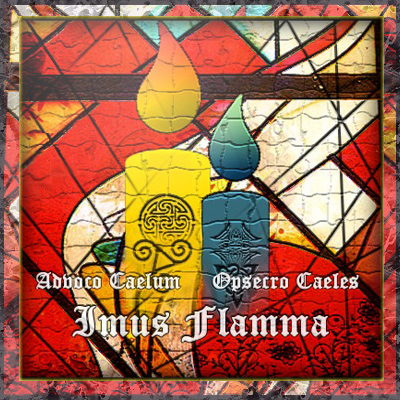Difference between revisions of "Aetheris Pyrism"
(adding image) |
|||
| Line 22: | Line 22: | ||
== Pantheon == | == Pantheon == | ||
| − | + | [[Image:The Omni Creation.png|thumb|left|An artist's depiction of the god Nalucht using the essence of the all gods to create the earth.]] | |
''Main Article: [[/Pantheon|Pantheon]]'' | ''Main Article: [[/Pantheon|Pantheon]]'' | ||
Revision as of 09:12, 23 September 2011
| Aetheris Pyrism | |
 Imus Flamma: Advoco Caelum. Opsecro Caeles. | |
| Realms |
Luria Nova Pian en Luries Grand Duchy of Fissoa Luria Vesperi D'Hara Solaria Summerdale |
| Prophets | |
| Fire Prophet | Torpius D'Arricarrère |
| Elders | |
| Vicar of Fire High Priest of Fire High Priest of Nalucht |
Bipel Coldchest Lucini Talratheon Aarnout Mortimer Wilfred Roos Kendark Stonesoul |
| Temples | |
| Fissoa Giask Askileon Shinnen Thar Gortauth Sallowtown Shinnen Purlieus Ciarin Tut Grodno Garuck Udor Orz Outer Giask Aveston Mellifera Maf Santoo Herle Moon Bay Vaal Smokey Hills |
Large Temple (5) Medium Temple (4) Medium Temple (4) Medium Temple (4) Medium Temple (4) Small Temple (3) Small Temple (3) Small Temple (3) Small Temple (3) Small Temple (3) Primitive Temple (2) Small Shack (1) Small Shack (1) Small Shack (1) Small Shack (1) Small Shack (1) Small Shack (1) Small Shack (1) Small Shack (1) Small Shack (1) |
Contents
Introduction
Aetheris Pyrism is a set of practices and beliefs that guides its practitioners through the spiritual and mortal worlds. It aims to the improvement of one's self through the attunement with the divine.
Flamma
Main Article: Flamma
Aetheris Pyrism deals with a complex notion called flamma, literally 'flame', which designates the spiritual essence present everywhere, making things move and live.
The flamma is subdivided in several other categories. One of them is what we could roughly translate as the soul, called the imus flamma (literally 'innermost/deepest flame'), which constitutes men it and links them to the divine. It is thought that every human being has a particular imus flamma, and that all the potentialities of the mind and body are directly linked to how attuned one is to it. Aetheris Pyrism attempts to teach such attunement.
Worship
Main Article: The Spiritual Order
Aetheris Pyrism deals with two levels of worship of four different orders of beings. It works on a lower level, in private ceremonies and shrines built in the practitioners' houses, and on a higher level, in public temples and festivals.
The objects of worship are, in a lower scale, the ancestors and the lower spirits of the world. In an intermediary level, the saints are object of veneration. In the top of the spiritual hierarchy, object of the highest devotion, are the Gods.
Pantheon
Main Article: Pantheon
The Gods
Katrina is not the embodiement of order, nor Korroth is the essence of Chaos. Aetheris Pyrism believes that those two extremes end up meeting in the nothingness of Ukhra. Katrina works as the ideal of the right measure of order and serenity, while Korroth represents a chaotic and glorious life. They are not the only possible paths, and probably not the best for everyone. Other gods incarnate other lifestyles and paths destined for other people. As long as these people manage to successfully attune themselves with their inner godly flamme, and live a life in harmony with them, they should be blessed.
The Holy Spirits
Thought to live in the stars of the firmament, the Higher Spirits are the intermediaries of the Gods and the mortals. Though their intentions and purposes are hard for mortals to decipher, communication with them is possible through usually cryptic or otherwise unclear visions, dreams and symbolic messages. Normally only Priests and otherwise very spiritually enlightened ones try to contact them through prayer. The usual method is by silently praying after checking the presence of stars in the firmament, to confirm a Higher Spirit will be present to hear the prayers.
The Unholy Ones
The cursed one's names should not be pronounced out loud but in very special circumstances. Their names said aloud, or even written, provokes fear in any faithful follower of Aetheris Pyrism, who only reference them only by their epithets. Less devout commoners reference them purposely mispronouncing their names, usually to scare children with their image.
Credo
I believe in the holy flames, which purify living and dead.
I honor my ancestors, who give me courage and strength.
I respect the spirits, who influence tides and seasons.
I worship the Gods, who rule heaven and earth.
I renounce the impurity, which corrupts mind and body.
I reject the underlords, who consume flesh and soul.
Core Beliefs
Main Article: Beliefs
The divine truth is composed by what is considered canonical by the church. Such concepts tend to remain unchanged through the years and be strictly followed, though possibly being subject of different interpretations.
Practices
Main Article: Practices
The divine path is made of less strict rules and truths, but more of concepts that cemented themselves over the years, becoming established religious practices.
Mythology
Main Article: Mythology
The divine history taught in the temples and preachings. It is a human narrative of the translated message of the Gods, as gathered through the divine inspiration and messages of the Higher Spirits.
Theology
Main Article: Theology
The study of all the divine, spiritual, transcendent and even the unholy.
Church
Temples
Main Article: Temples
Places of worship for the followers of Aetheris Pyrism.
Ranks
Main Article: Ranks
Ecclesiastical hierarchy.
